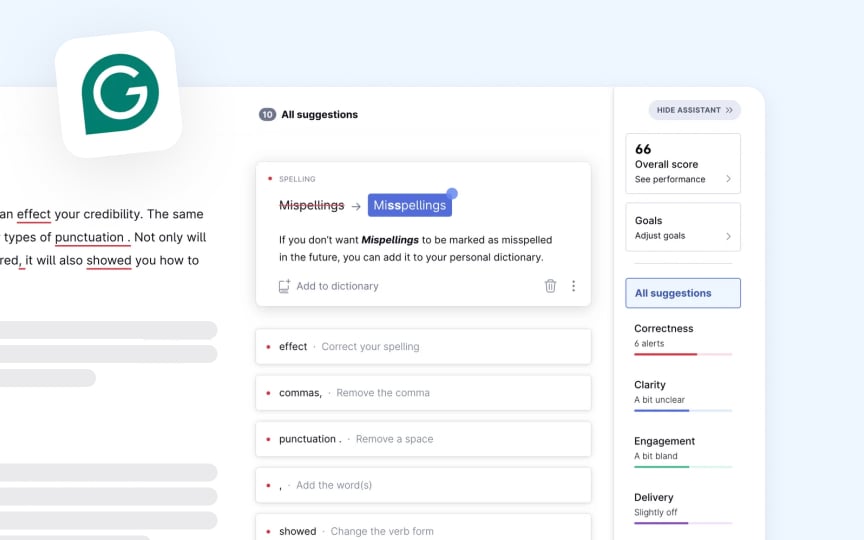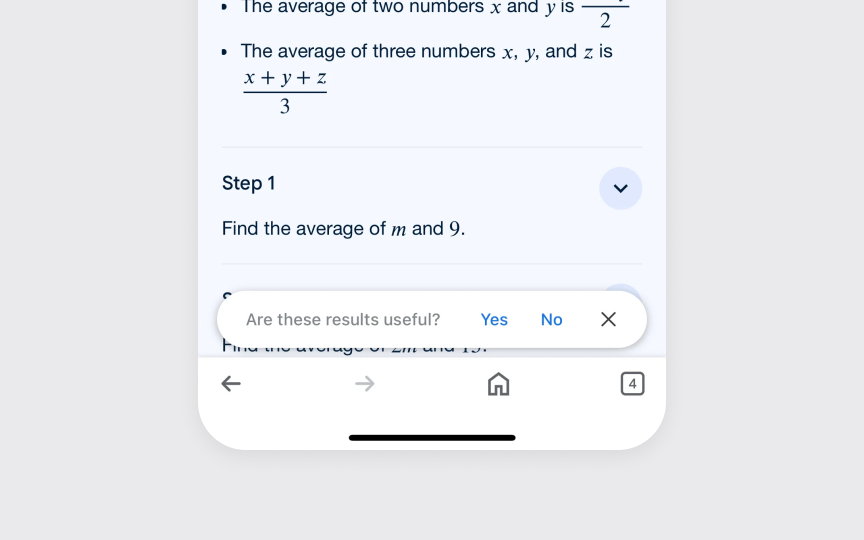Value Proposition & Problem Selection
Identify where AI truly adds value and choose between augmentation and automation to maximize user benefits.
AI delivers genuine value only when matched to the right problems. Some tasks benefit tremendously from AI augmentation, like helping radiologists spot anomalies in scans or assisting writers with research. Other situations call for complete automation, such as filtering spam or personalizing content feeds. The distinction depends on factors like task complexity, stakes, and the cost of errors. Success extends beyond technical metrics like accuracy. An AI feature with 99% precision might still fail users if it doesn't account for their workflow or control preferences. Meaningful metrics consider both quantitative performance and qualitative experience. This includes how confidently people use the system and whether they trust its decisions. By carefully selecting problems where AI adds unique value and defining holistic success criteria, designers create experiences that genuinely enhance human capabilities instead of simply showcasing technology.
- Finding patterns in complex data
- Making predictions based on many factors
- Personalizing experiences for different users
- Implementing tasks requiring continuous adaptation
For example, AI is great at spotting subtle details in medical scans that people might miss or creating custom learning paths based on how each student progresses. The most successful AI projects tackle problems that have clear patterns but are too complex for simple rules. These problems have consistent structures that machines can learn from data. Before deciding to use AI, ask whether the problem involves a level of complexity or variety that actually needs machine learning. Many tasks that seem like good candidates for AI can be solved better with simpler, more transparent approaches. A basic product
Pro Tip: Start by asking, "Could this be solved without AI?" and only proceed with AI if the answer reveals genuine limitations in traditional approaches.
It's equally important to recognize when
To evaluate whether a problem truly requires AI, examine it through 3 lenses:
- Complexity: Is the problem too difficult for rules-based solutions?
- Variability: Does the context constantly change?
- Scale: Does the solution need to handle massive amounts of data or users?
AI-worthy problems typically score high in at least 2 of these dimensions. Focus on targeting AI at critical business challenges where its unique capabilities can create substantial value, like analyzing customer churn factors across millions of interactions or developing fraud detection systems that adapt to new criminal tactics.
The AI Value Matrix may help you evaluate potential AI applications by plotting them on 2 axes: complexity and user value. Problems in the high-complexity, high-value quadrant are prime candidates for AI implementation. Those in the low-complexity quadrant, regardless of value, are typically better solved with conventional approaches.
Certain clues suggest a problem might benefit from
- Look for situations where traditional approaches have repeatedly failed despite efforts to improve them. Email spam
filtering evolved from simple rules to AI because spammers kept finding ways around static rules. - Consider problems with many "gray areas" that need careful judgment rather than yes/no decisions.
Content moderation across different cultures shows this need, as community standards involve subtle interpretations that rigid rules can't handle. - Check if the problem involves analyzing more data than humans can reasonably process, like studying millions of customer
interactions to find patterns. - See if the problem requires adapting to changing conditions in real time, such as pricing models that respond to market changes.
- Consider whether personalization significantly improves the user experience, as with learning platforms that adjust difficulty based on individual progress.
Pro Tip: Create a "complexity/adaptability" score for your problem from 1-10 for each factor to objectively assess whether AI would provide meaningful advantages.
Medical diagnosis tools that highlight possible problems for doctors to review show this model in action. The AI processes images faster than humans could alone, marking areas that look concerning, while the doctor applies their medical knowledge, experience, and judgment to make the final diagnosis. Augmentation works when humans keep meaningful control while gaining efficiency or insights they wouldn't have otherwise.
Creative tools like AI-assisted writing platforms suggest alternatives or extensions while letting writers maintain their voice and intent. This partnership allows humans to focus on higher-level thinking, creativity, and ethical considerations while letting AI handle pattern recognition, data processing, and routine tasks. Together, they create value beyond what either could achieve alone.
Complete automation works best in specific situations:
- Consider cases where humans add little value to the decision process, such as adjusting home temperature based on when people are present or managing computer resources in data centers.
- Second, check whether the consequences of occasional mistakes are acceptable.
Email sorting can be fully automated because the cost of putting an email in the wrong folder is usually low, especially when users can easily fix mistakes. - Assess whether the process benefits from running continuously without needing humans to be available, like automatic bidding systems for online ads that run 24/7.
- Determine if the task is so repetitive that it leads to human fatigue or inconsistency, such as quality checks in manufacturing.
- Consider whether the volume of decisions would create too much work for human operators, as with
content moderation on platforms that process millions of uploads every day.
Pro Tip: Create backup options in automated systems that connect users to human helpers when the AI isn't sure how to respond.
Choosing between augmentation and automation has important ethical implications beyond just technical considerations. Think about how automation affects people's control, dignity, and well-being. Systems that make important decisions about people's lives, such as who gets a loan or who gets hired, raise questions about fairness and who's responsible when things go wrong. When people affected by these decisions can't understand or challenge them, power imbalances grow. Jobs changed by
For example, healthcare messaging systems might generate information efficiently, but sharing difficult news requires human empathy and judgment. Decisions about what to automate shouldn't just come from technical teams. They should include input from the people who will use the system, be affected by it, or implement it. This inclusive approach helps spot potential problems early and creates systems that are more fair and helpful for everyone involved.
Consider measuring the following metrics:
- Adoption rates and continued engagement, which show whether users find value in the AI functionality over time
- Trust indicators through user behavior patterns, such as how often people accept or override AI suggestions
- Efficiency improvements in user workflows, comparing time-to-completion or
error rates before and after adding AI - Satisfaction through both direct feedback and indirect signals, like how frequently features are used
For augmentation systems, measure complementary performance, evaluating how the human-AI team performs compared to working alone. Context-specific metrics matter too: an AI writing assistant might track accepted suggestions, while a recommendation system might measure discovery diversity. Good metrics align with specific user goals and business objectives rather than focusing only on model performance.
The quality of AI-powered experiences depends on factors beyond how well algorithms perform. Instead of focusing only on technical accuracy, we need to evaluate the entire
- Response appropriateness measures whether
AI outputs match what users want and expect, not just technical correctness. An AI assistant might give factually accurate but irrelevant responses if it misunderstands what users are trying to do. - Interaction smoothness evaluates how naturally the AI fits into user workflows without creating friction or mental burden.
- Timing appropriateness assesses whether the AI steps in at the right moment: too early feels intrusive, while too late reduces value.
- Expectation management tracks how well the system communicates what it can and can't do, preventing frustration from unrealistic user assumptions.
- Recovery grace measures how well the system handles
errors or misunderstandings.
Regular testing with real users in realistic situations remains essential, as lab measurements often miss important aspects of real-world usage.
Creating good benchmarks for
- Absolute benchmarks establish minimum thresholds that must be met before release, such as "speech recognition must achieve 95% accuracy across all accents."
- Relative benchmarks track improvement over time, like "customer satisfaction with recommendations should increase 5% quarterly."
- Competitive benchmarks compare your system against alternatives to understand your market position.
Start by defining what "good" looks like from users’ perspective. For a customer service AI, include metrics like time-to-resolution, satisfaction scores, and successful handoff rates to human agents. Establish baseline measurements before implementation to enable valid before-and-after comparisons. Include both technical metrics (accuracy, speed) and experience metrics (satisfaction, trust, continued usage). The most valuable benchmarks reflect real user situations rather than artificial test environments. Check performance across different user groups to ensure the system works well for everyone, not just the majority of users. This prevents creating systems that perform well in controlled tests but fail for important segments of your actual audience.
Effectively explaining the value of
- For senior stakeholders, connect AI implementations to strategic goals and return on investment. Show how AI features improve operational
efficiency , increase revenue, or create competitive advantages using concrete metrics they care about. - For end users, focus on tangible benefits like time saved, reduced mental effort, or new capabilities they couldn't access before.
- For implementation teams, address practical concerns about integration complexity, maintenance needs, and long-term support requirements.
Use real examples rather than theoretical possibilities. Share case studies of similar problems successfully solved with AI, ideally with measurable results. Be honest about limitations while emphasizing progress and improvement potential. Visual demonstrations often communicate AI value more effectively than technical descriptions. Consider creating before-and-after workflow comparisons or dashboards showing key performance improvements. When presenting to mixed audiences with different technical backgrounds, structure your information in layers. Start with high-level benefits everyone can understand, then provide additional technical details for those who need them.
Top contributors
Topics
From Course
Share
Similar lessons

Continuous Discovery Mindset

Business Outcomes vs. Product Outcomes






















